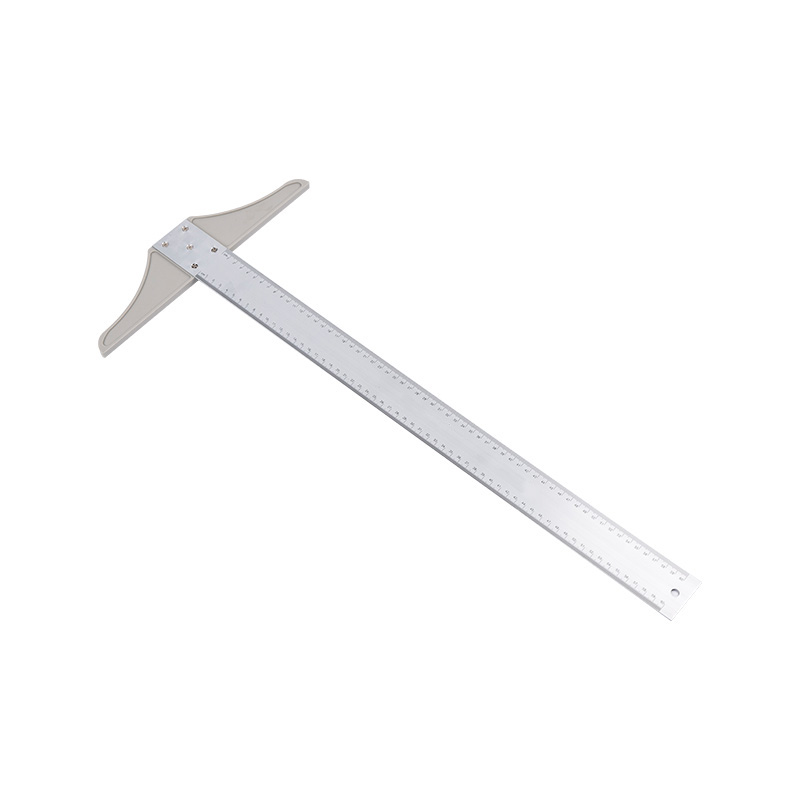In the intricate realm of drafting and technical illustration, the choice of tools plays a pivotal role in shaping the precision and quality of the final output. Among the essential instruments, the aluminum T-square stands as an indispensable companion for architects and engineers alike. However, the divergent requirements of architectural drafting and engineering drawings necessitate a discerning eye when selecting the ideal T-square.
Precision Requirements: The pursuit of precision, a shared ethos between architects and engineers, manifests uniquely in each discipline. Architects, often driven by the visual harmony of their designs, seek a precision that complements their aesthetic vision. On the other hand, engineers, dealing with the minutiae of technical specifications, demand a heightened level of precision. Understanding these nuances is fundamental in selecting a T-square that aligns with the specific precision requirements of each profession.
Scale and Measurement Units: The choice of measurement units transcends mere practicality; it embodies the language of the discipline. Architects may traverse between imperial and metric units, necessitating a T-square that seamlessly adapts to their fluidity. Engineers, entrenched in the precision of their technical drawings, require scales that precisely mirror their chosen units. Thus, the selection of an aluminum T-square becomes an exercise in linguistic precision.
Length of T-Square: The dimensions of architectural and engineering drawings present distinct challenges, dictating the length of the T-square. Architects, engaged in expansive designs on larger sheets, gravitate towards longer T-squares, affording extended reach and precision. Conversely, engineers, often immersed in intricate details on smaller-scale drawings, find efficacy in more compact T-squares. The length of the T-square becomes a dynamic variable, finely tuned to the scale of the professional's canvas.
Construction and Durability: Architects and engineers, though unified in their reliance on T-squares, diverge in their expectations of durability. Architects, wielding the tool with a touch of finesse, may prioritize a lightweight construction for ease of use. In contrast, engineers, whose work demands frequent and rigorous employment of the T-square, lean towards sturdier constructions that endure the demanding cadence of technical drafting. The materiality of the T-square becomes a testament to its endurance in the hands of professionals.
Handle Design: The ergonomic design of the T-square's handle emerges as a crucial consideration, reflecting the divergent working styles of architects and engineers. Architects, immersed in the fluidity of their creative process, seek a handle that cradles comfort, facilitating prolonged drafting sessions. In contrast, engineers, navigating the precise demands of technical drawings, value handles that expedite quick adjustments and measurements, enhancing efficiency. The handle design metamorphoses into an extension of the professional's workflow.
Attachment Points for Accessories: The symbiosis between the T-square and additional drafting tools defines the engineer's realm. Engineers, orchestrating a symphony of triangles and parallel rulers, demand T-squares adorned with attachment points and features that seamlessly integrate these accessories. Architects, whose accessory needs may differ, navigate a landscape where the T-square's adaptability to additional tools marks a pivotal distinction in their selection process.
Visibility and Marking: Architects, sketching the blueprint of their vision, wield an array of pens and pencils. The visibility of markings on the T-square, therefore, becomes a crucial consideration, ensuring that the instrument harmonizes with the diverse writing instruments of the architect's palette. The T-square transforms into a collaborator in the architect's artistic expression, where visibility is not just practical but an aesthetic necessity.
Portability: The professional's workspace, be it the architect's studio or the engineer's office, sets the stage for distinct considerations in portability. Architects, often traversing between drafting tables and construction sites, cherish the mobility of their tools. Engineers, tethered to office setups, may prioritize other features over portability. The weight and design of the T-square become key determinants in the architect's mobility and the engineer's stationary precision.
Aluminium T-square


